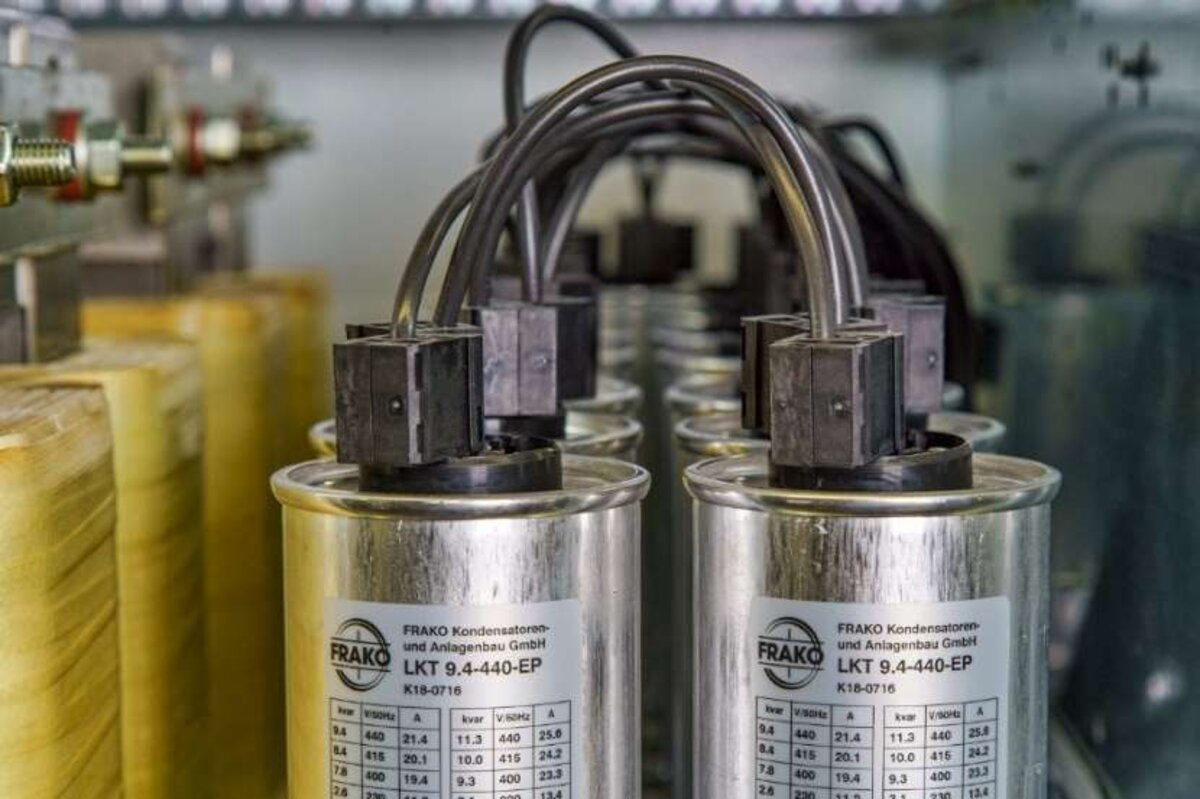Dynamic Compensation of Inductive and Capacitive Reactive Power for Railway and Metro Operating Companies
Author: Evgenii Khamadiev
In 2016, the European Commission set ambitious objectives for rail transport: capacity should be doubled and operating costs halved by 2050. The aim is to improve the competitiveness of the European rail sector.
Our joint project with Siemens Mobility Bulgaria will help to reduce operating costs. FRAKO Kondensatoren- und Anlagenbau GmbH was commissioned to design and assemble a dynamic power factor correction system to optimise power quality and avoid costs for reactive power.
Initial status:

The capacitive and inductive reactive power of the electric locomotives occur in the overhead line. This energy has an impact on the electricity grid and it causes high costs for the reactive power. Overhead lines have a relatively high inductance because the conductors are separated from one another and are not encased in a dielectric material. As a result, the cable acts as an inductor that can store electrical energy in a magnetic field. On the other hand, metro operating companies have the same problems with underground cables, as these are covered by a dielectric material and also show a relatively high capacitance. As a result, the cable acts as a capacitor that can store electrical energy in an electric field. If the current passing through the cable changes, the electric field also changes and this will change the voltage in the cable. This phase shifting is where reactive power arises. In summary, it can be said that both underground and overhead lines absorb reactive power.
The power factor correction requirement throught passing locomotives was determined by Siemens Mobility Bulgaria. The power requirement is 1500 kVAr for both capacitive and inductive power factor corrections. The demand changes very quickly in 2 quadrants as the train approaches the station. For this reason, a dynamic mixed compensation system is used. See illustration 1.
FRAKO participated in this important project in 2023. We worked closely with Siemens Mobility Bulgaria to design a system that precisely meets the end customer's needs. The system fulfils all customer requirements for a dynamic compensation system in terms of power, quickness and durability.
Dynamic processes require special components
FRAKO power capacitors were used in single-phase technology with effectively integrating a self-healing capacitor film, segmented metallization technique, and a mechanical fuse as overpressure disconnector. In addition, the contact is made in the capacitor using a patented contact ring. The advantage is a significantly longer service life and higher operational reliability. Harmonic filter reactors were also installed, which make the compensation system resistant for use in networks with harmonic distortion (see Photo 1).

Shunt reactors were used for the inductive power factor correction system. Compared to harmonic filter reactors, these reactors require more space and are heavier. For dynamically changing loads, it makes sense to use thyristor switches for fast switching of capacitors. A key benefit of thyristor switches is their rapid and delay-free switching in the next zero crossing of the current, that can effectively prevent inrush current peaks. Compared to contactors, there is no need to replace contactors. The contactors are wear parts and must be replaced after approx. 80,000 switching operations. With a high switching frequency, this can be after 2-3 years. Thanks to this integrated switch technology with thyristor switches, the modules can be switched on and off smoothly and wear-free. (see Photo 2.)
The special reactive power controller operates in 4 quadrants operating mode and can use both inductive and capacitive stages. The intelligent control algorithm of the controller optimises the stage switching. In addition, the switching cycles and operating hours are regular distributed, which ensures a longer service life for all components. The system consists of 12 cabinets and was designed with different stage sizes due to cost and flexibility reasons. See Photo 3.
Photo 4 shows the entire inductive system.


| Technical features | |
|---|---|
| Application | Compensation (capacitive/inductive) including filter reactors and shunt reactors |
| Rated frequency | 50 Hz |
| Detuned factor | 134 Hz / p=14% |
| Rated voltage | 690 V |
| Capacitor stages | 4x54 + 4x108 + 4x216 kvar, capacitive 1x100 and 7x200 kvar, inductive |
| Equipment | Controller for dynamic switching Ventilation system |
Result:
Following a successful factory acceptance test at FRAKO in Teningen by Siemens Mobility Bulgaria, the entire system was delivered to Bulgaria in 2023. This investment will continue to improve power quality and reduce operating costs.
The system will be installed and commissioned on site under the supervision of our power quality experts and service technicians.
If you would like further information or are planning a similar project, please contact us.
Download Case Story
Download Dynamic compensation of inductive and capacitive reactive power for railway and metro operating companies as a PDF file.